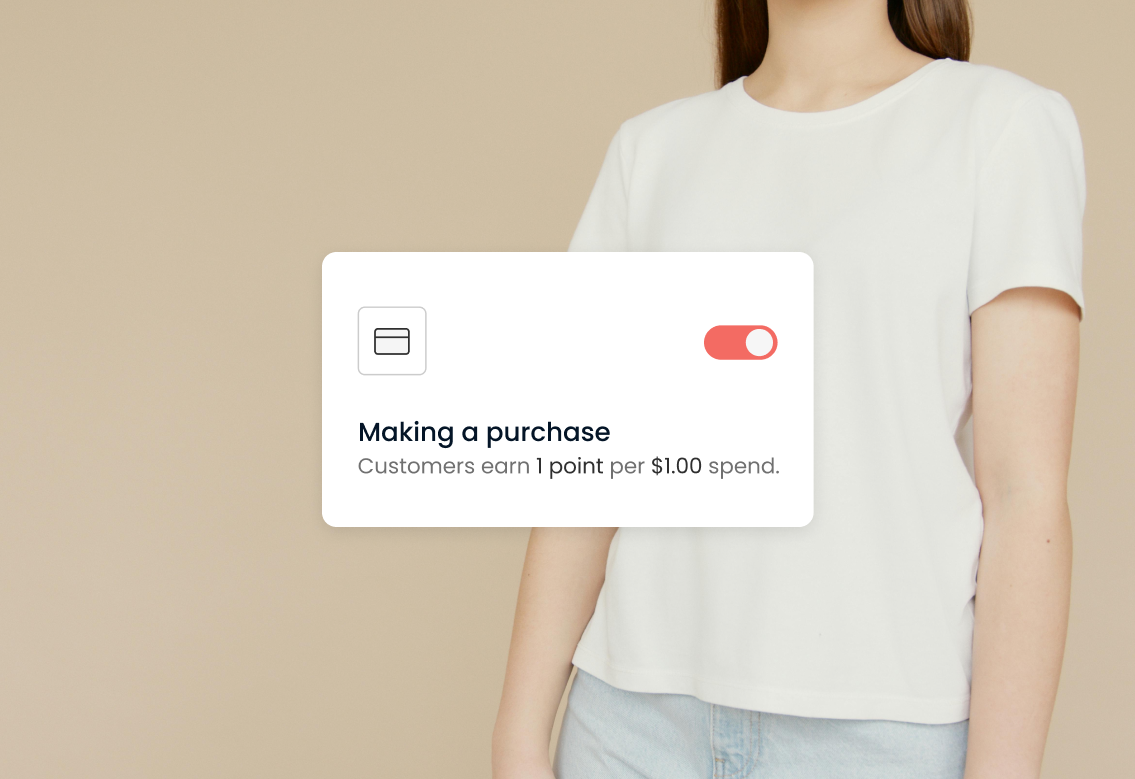
Fun fact: 20% of customers stated that rewards programs influence their choice of where to shop.
There are clear benefits to having a loyalty program. However, there are also some hard truths: Just because it’s driving customers doesn’t mean it’s making bank. Businesses that fail to recognize they’re overspending on rewards or misjudging their importance are more likely to suffer losses.
To create a successful loyalty program, be sure to check whether its benefits outweigh the costs right from the outset. This means taking the time to calculate loyalty points accurately and making sure that you’re valuing your program’s points in line with your business goals and targets.
This comprehensive guide will help you determine the optimal value for loyalty points. We’ll dive into essential pricing principles, effective strategies, real-world examples, and common challenges.
By the end of this guide, you'll be able to set yourself up to achieve consistent and lucrative returns from your loyalty marketing strategy.
What are loyalty rewards?
Loyalty rewards are incentives offered by businesses to encourage and reward repeat purchases by customers. They can come in the form of:
- points
- discounts
- exclusive benefits
…all of which are designed to build and maintain a strong, loyal customer base.
Think of it this way: loyalty rewards are the currency of customer appreciation, and that’s why some of the world’s most customer-centric brands — including Starbucks, Sephora, and Amazon — invest a great deal in their loyalty and rewards initiatives.
These companies know that loyalty programs encourage repeat purchases while nurturing relationships with their customers.
Rewards programs also have a tangible impact on sales metrics. Some programs require reaching a specific cash or credit card spending threshold for loyalty points. This encourages higher splurging in a single transaction to increase basket size and average transaction value.
In fact, our research shows that on average, a loyalty member spends 72% more than an anonymous shopper.
Principles of pricing rewards
Pricing customer loyalty rewards requires a balance between attraction and sustainability to ensure immediate engagement and long-term profitability. Your rewards must be enticing enough to capture attention without compromising your profit margins or undervaluing your products.
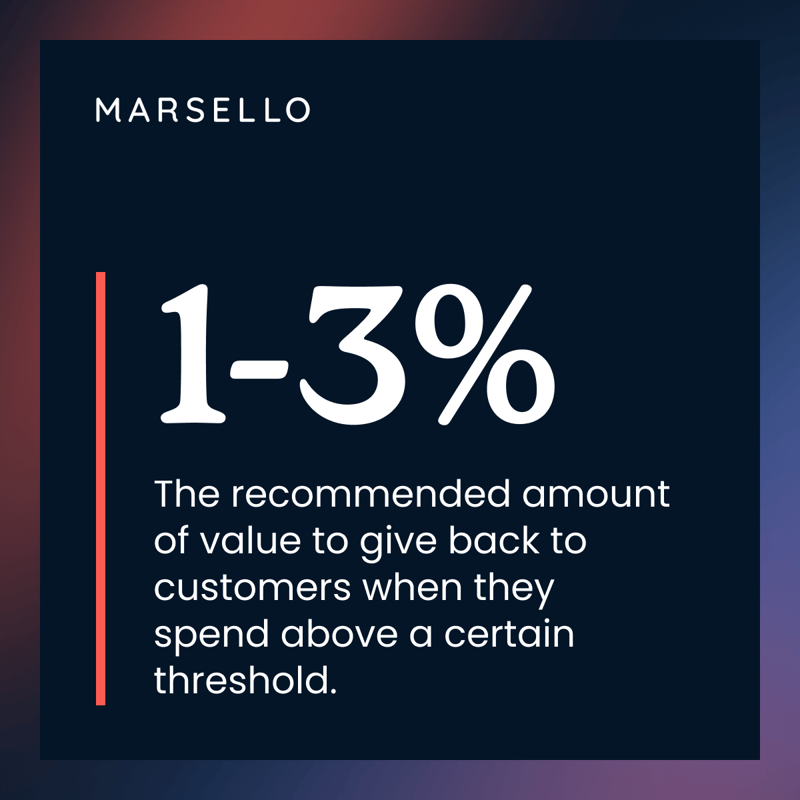
You can achieve this balance by keeping the following in mind:
Considerations when pricing rewards
To calculate loyalty points more accurately, consider the following factors when designing your program.
1. Customer Lifetime Value (CLV)
CLV is the overall expected revenue from customers throughout their engagement. Thus, it helps you determine the maximum reward program investment while maintaining profitability.
Customers with a CLV above your average CLV indicates that they are long-term customers who are engaged and loyal. You can offer them high-value rewards, such as VIP events, limited-edition products, or loftier monetary rewards. Conversely, lower CLV shoppers can enjoy modest rewards like free shipping on certain thresholds to encourage ongoing engagement while retaining positive ROI.
2. Cost of rewards
Cost of rewards is a key metric to avoid overspending. Your total loyalty point rewards cost mustn’t exceed the incremental benefits generated by increased customer spending.
Note: Incremental benefits don’t only mean higher sales. It can also include non-monetary benefits like increased customer retention, improved brand loyalty, and more word-of-mouth referrals.
Add the product/service, fulfillment, and administrative expenses associated with granting rewards to get your total cost of rewards. Then, compare that against the benefits to analyze the potential return on investment for different reward options.
For example, if offering a free product as a reward incurs a direct cost of $5 to your business, you should ensure this cost is more than covered by the additional spending or engagement the reward generates.
3. Competitive positioning
This factor influences your offering’s perceived value relative to competitors. If your competitors offer similar rewards at a lower price point, you may need to tweak your pricing strategy to stay competitive. Otherwise, you can justify a premium price with unique, high-quality rewards.
You can even go a step further by identifying areas where competitors fall short and strategizing to fill those gaps. Conducting market research analysis can be helpful in such a case.
"On average, transactions made by loyalty members are worth over 60% more than anonymous transactions. Imagine even just 5% of your customer-base joins your loyalty program, and spends 60% more per transaction. Think what that would do to your bottom line."
- Rory Moss, Loyalty Expert
4. Economic conditions
Economic conditions can intensify market competition. During downturns, shoppers become more price-conscious and seek value for money. You can choose to engage in price wars or offer aggressive pricing strategies (i.e., offering higher-than-normal loyalty points) to gain customers.
Since this external factor is inevitable, you can only mitigate their effects to some extent. Leverage predictive analytics to anticipate shifts in demand and adjust your pricing like you would for competitive positioning.
5. Market demand
Responding to market demand for loyalty program rewards involves monitoring purchasing patterns, survey results, and industry trends. Insights from these activities shed light on which reward types appeal the most to your customer base.
When market demand for exclusive events is high, customers perceive these offerings as valuable and are willing to pay premium prices for them. Thus, you can charge more for experiential rewards.
Pro-tip: Market demands fluctuate. Continuously monitor your pricing strategy’s performance and adjust it as needed.
Point structuring
Customers may perceive the program as less valuable if it doesn’t meet their expectations or if the loyalty point bonus takes too long to accumulate. It can lead to decreased participation and engagement.
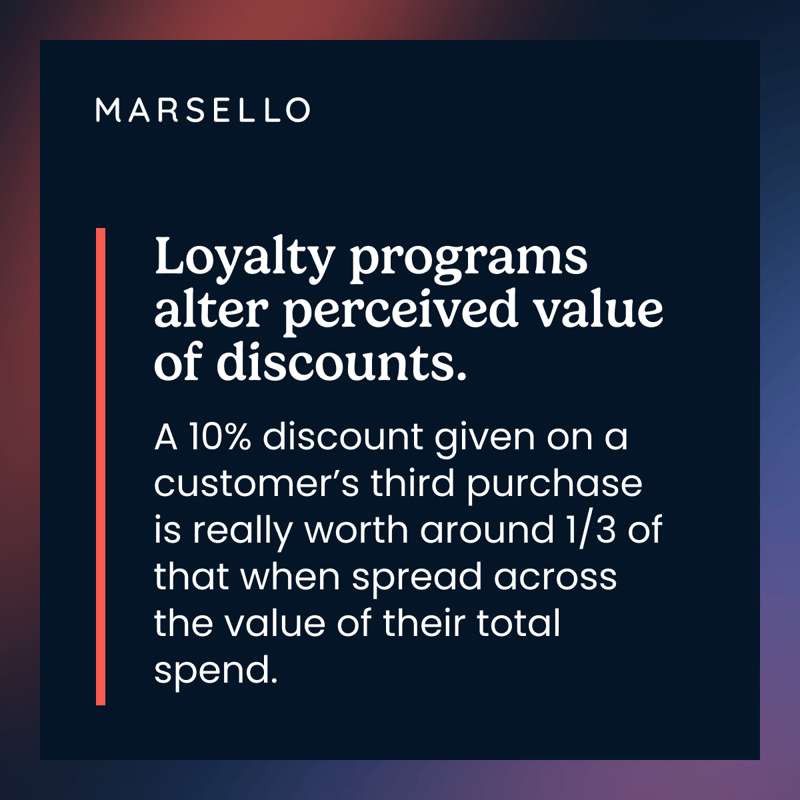
Here are two ways to structure a well-designed points system that serves your (and your customers’) needs:
Point Valuation
Set a monetary value for each loyalty point. It can be a fraction of the average profit margin per transaction or your CLV.
For instance, if each loyalty point is valued at $1.00, the program becomes straightforward and highly perceivable in terms of value, making it easy for customers to understand how much they’re earning with each transaction.
It’s best to start with a conservative point value. After monitoring customer response and performance metrics, make adjustments to obtain the optimal point value.
Point-to-spend Ratio
Specify the number of loyalty points customers will earn for every dollar spent on purchases. A higher ratio encourages more frequent purchases to accrue points faster. Meanwhile, a lower ratio delays point accumulation but helps reduce program expenses.
Industry benchmarks are a good reference point, but maintain it in line with your objectives. For instance, if the goal is to increase customer retention, opt for a higher ratio to encourage repeat purchases and ongoing engagement.
Refer to these price structuring options when deciding on the reward types you’ll offer. But before we get into these, here are more strategies to calculate loyalty points more accurately.
4 steps to sustainable rewards pricing
Follow these practical strategies to optimize your reward pricing while keeping the loyalty program compelling and aligned with your financial goals.
1. Understand cost-based pricing vs. value-based pricing
Cost-based pricing focuses on covering loyalty program expenses and guaranteeing profitability, while value-based seeks to connect rewards with perceived customer value.
Cost-based pricing calculates the direct costs associated with providing rewards. It’s a safer option for startups or small businesses with limited resources. It sets prices based on tangible costs rather than uncertain market factors or vague perceived value.
Here’s a simplified illustration without factoring in retention rates, seasonal fluctuations, competitor strategies, and other pricing factors.
You’re running a loyalty program, costing you $22 per individual ($15 for reward product costs, $5 for marketing expenses, and $2 for administrative overhead). If you aim for a 20% profit margin, you should be earning $27.60 per customer enrolled ($22 total cost per customer / 0.8 profit margin).
Value-based pricing, on the other hand, doesn’t focus on cost recovery. You calculate loyalty points pricing based on its impact on customer satisfaction and loyalty. It’s ideal for businesses that value brand reputation, such as luxury goods and high-end technology.
For instance, you could offer personalized services or products not available to the general public. This approach enhances their perceived value and can justify a higher points requirement, encouraging more purchases and engagement from members.
2. Incorporate customer feedback and insights from your data
Feedback lets you understand what your customers truly value. Solicit their ideas through surveys, reviews, and direct communication channels.
In addition, data analytics can help you see exactly what works and what falls flat in your program. It tracks key metrics like CLV, redemption rates, and engagement levels. Use these insights to tweak your offerings and personalize rewards based on each customer base’s behavior and preferences.
3. Define your objectives
Your loyalty program’s objectives ensure that each reward contributes to attaining your bigger goals. Specify your target goals, whether it’s increasing customer retention or boosting sales.
Review your current reward offerings and assess how well they support these goals. Suppose your initial objective is to boost customer retention, but you notice that reward redemption rates are low. You can adjust your reward structure to include more experiential rewards or exclusive perks to pique more interest.
4. Analzye competitors and position yourself strategically in-market
Your competitors can overlook market gaps — and that’s where you come in. Study their offerings, including their reward types, pricing strategies, and program features. Recognize their shortcomings and make them your strengths.
Let’s say your findings show competitors lack flexibility in redeeming rewards. In this instance, having multiple redemption channels (e.g., online, in-store, and mobile) can help make your program stand out in a crowded market.
3 examples of successful rewards pricing structures
Check out these three brands that have captivated customers and driven business growth through their loyalty programs. Here are their real-world success stories:
American Airlines
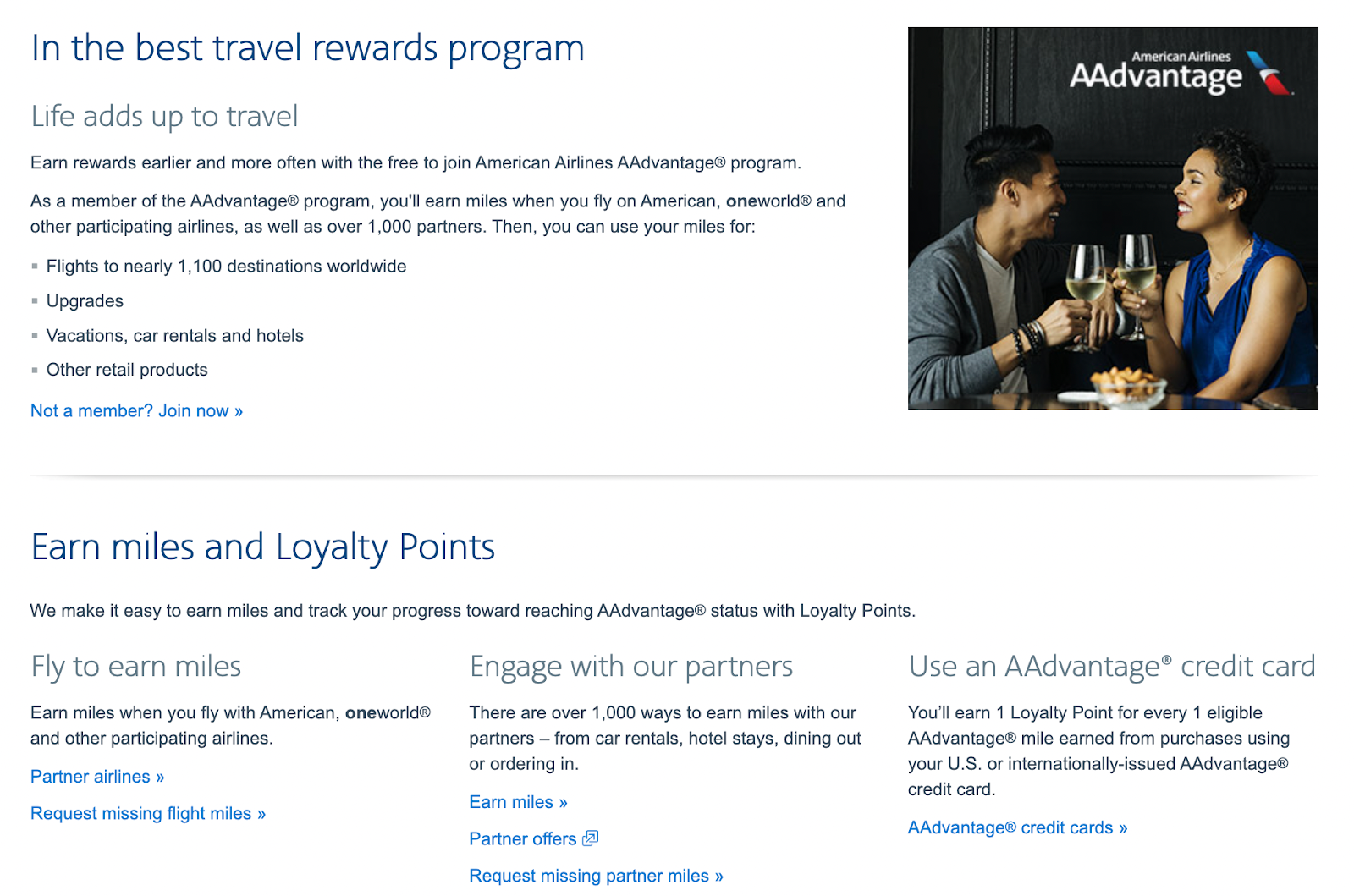
The American Airlines AAdvantage® program offers elite status to frequent flyers with exclusive privileges such as priority boarding, systemwide upgrades, and extra baggage allowance. AAdvantage members can also earn bonus miles with partner airlines with every purchase using any Citi®/AAdvantage® Aviator® credit card.
Anyone can enroll with no annual fee, suggesting that value-based pricing can be as profitable as cost-based pricing. The AAdvantage® program’s longevity speaks volumes about its success. The increased engagement and revenue from more airline bookings and card purchases outweigh the reward costs, resulting in a favorable bottom line.
Neal's Yard Remedies
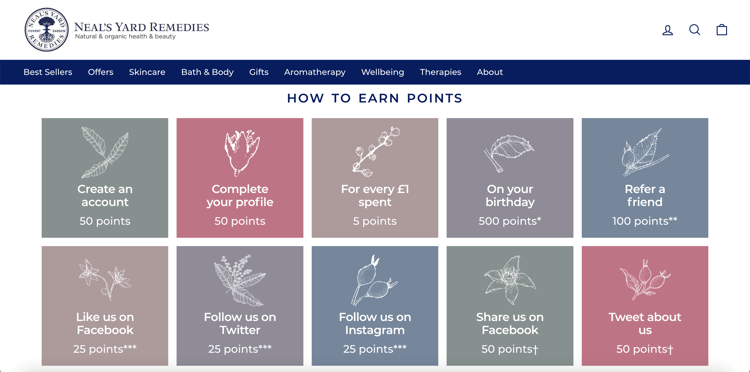
After decades of successful sales, Neal's Yard Remedies wanted to take the next step. It was time to undergo a digital transformation to offer a truly omnichannel experience. Unfortunately, their old POS was complicated to use and lacked an open API. Neal’s Yard Remedies wanted to find a POS and loyalty solution that worked seamlessly with their ecommerce platform to deliver that omnichannel experience.
Now, Neal’s Yard Remedies run an easy-to-use loyalty program across all their sales channels. It’s clear how to earn points, and there are multiple ways to earn. For a purchase, their points to spend ratio is set at 5:1 (customers earn 5 points when they spend £1). They’ve opted for a simple framework for rewards too: 500 points are worth £5.
Alpha60
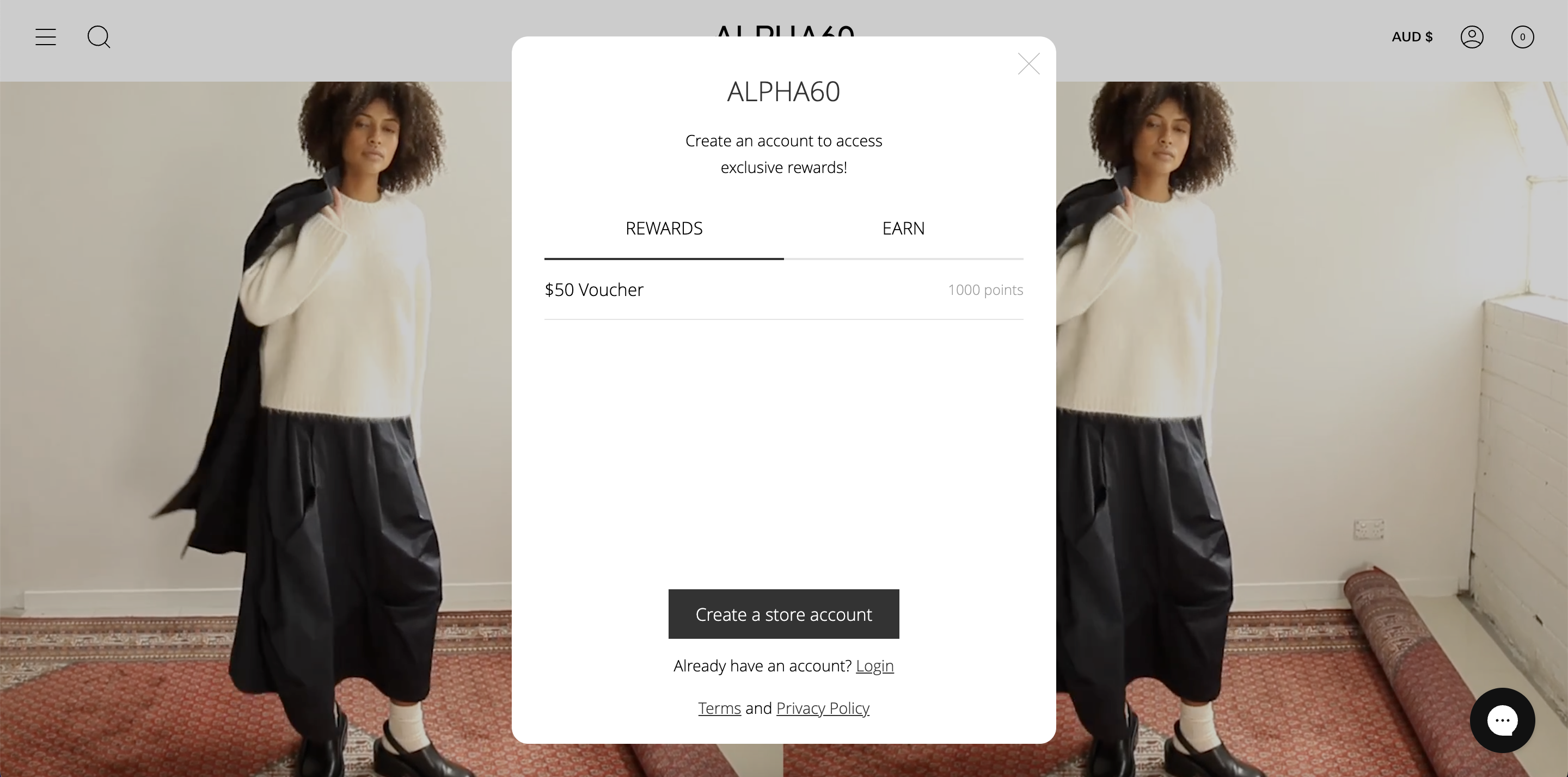
Alpha60 takes a different approach. Brand Manager Kelvin explains that Alpha60's loyalty program is about 'surprise and delight', rather than a promotional tool used to incentivize sales.
As part of the customer-first approach, ALPHA60 decided to make the loyalty program as simple as possible. Spend a thousand dollars, get a thousand points (a 1:1 points-to-spend ratio), get a $50 voucher.
“We try not to complicate it too much and add different things in, and that really works for us. I think it’s because it’s simple for people. It’s easy for customers to understand.” Kelvin believes simplicity helps customers get more invested with their points: they always know when they have a voucher ready to redeem.
Challenges in pricing rewards
The most common types of loyalty rewards include:
- Percentage-based discounts
- Fixed dollar discounts
- Free shipping
- Free products
- VIP experiences
Each loyalty program reward has its cost implications. For instance, percentage-based discounts work well with price-sensitive customers or low average order values. They encourage larger purchases or more frequent visits, although they could hurt your bottom line if applied to high-value items.
If shoppers mostly have higher and varying average order values, setting fixed dollar discounts on specific thresholds or repurchase intervals can make pricing predictable.
E-commerce and online businesses benefit from free shipping because it eliminates potential barriers to online purchases. But you’ll have to set an average order value before you hand it off to your customers. Otherwise, it’ll erode your profits.
Offering free products or samples can boost product discovery and your loyalty program's perceived value. But like free shipping, the total cost shouldn't exceed the incremental revenue or engagement they generate.
VIP access or experiential rewards are an excellent option for building a loyal customer base. It helps enhance brand trust and differentiation by fostering a sense of belonging among top-tier loyalty members. To ensure profitability, only offer this reward when increased engagement and CLV can justify the expenditure of delivering such experiences.
Here’s a table to simplify your comparison:
|
Reward type |
What |
Good for |
Consider |
|
Percentage-Based Discounts |
Customers receive a certain percentage off their purchase. |
Businesses with a low average order value (AOV) or those selling commodity products where customers are price-sensitive. This can encourage larger purchases or more frequent visits. |
It might eat into margins if not carefully managed, especially for high-value items. |
|
Fixed Dollar Discounts |
Offers a fixed dollar amount off, which could be on the next purchase or once a certain points threshold is reached. |
Businesses with higher and varying AOVs, as it provides a predictable cost that doesn't fluctuate with the price of the cart. It's also appealing for businesses that want to encourage a minimum spend. |
Ensuring the discount threshold doesn't undercut profit margins is essential. It's also less enticing for low-value purchases. |
|
Free Shipping |
Free shipping on orders after reaching a certain points number or as a tiered benefit. |
E-commerce businesses or those with a significant online presence. It's particularly effective if shipping costs are a known barrier to purchase. |
Should be balanced with shipping costs to avoid eroding margins, especially for low-margin products or very distant shipping destinations. |
|
Free Products or Samples |
Offering free products or samples once customers reach a certain tier or points level. |
Retailers with high-margin items or those looking to introduce new products. It encourages exploration of your product range and can enhance the perceived value of the loyalty program. |
The cost of goods given away should be carefully considered against the incremental revenue or engagement they drive. |
|
VIP Access or Experiential Rewards |
Providing access to exclusive events, products, or experiences for top-tier loyalty members. |
Brands with a lifestyle component or those looking to build a community among their customers. Works well for businesses aiming to enhance brand loyalty and differentiation. |
The cost of creating these experiences should be justified by the increased engagement and customer lifetime value they generate. |
To minimize costs while maintaining attractive rewards, don’t put all your eggs in one basket. Spread your investment across multiple reward types to target diverse audience segments. It won’t alienate customers who may not prefer a particular reward type. If you still can’t decide, talk to an expert for tailored advice.
Free Download: PDF and calculator for structuring your points and rewards
For more loyalty program optimization insights and tools, download our new PDF and calculator on pricing points and rewards.
Notable trends in loyalty rewards
60% of brands claim experiences are indispensable for their success. Consider delivering experiential loyalty program perks they can’t get elsewhere to drive stronger brand advocacy.
Cutting-edge AI and analytics tools are another innovation that can help refine your reward pricing strategies. With online shopping, AI algorithms can track the most viewed, added to cart, and purchased products. Understand these patterns to maximize your pricing strategy on popular items.
Businesses also gather and analyze customer data in real time, urging more personalization and dynamic pricing. That way, you can streamline the redemption process with reward recommendations or one-click redemption. Implementing dynamic pricing could mean offering personalized discounts or bonuses tailored to individual customer profiles.
With so many emerging trends, it can be difficult to know where to begin. So, start with investing in the right loyalty software to harness these innovations and create highly effective reward systems.
Optimize your loyalty program today
Well-priced rewards inspire more loyal customers, reduce churn rates, secure repeat business, and differentiate your brand. All these benefits rely on how you calculate loyalty points and manage reward offerings.
With smart loyalty software like Marsello, customer-centric rewards with consistently high ROI are now more feasible than ever. Here’s our detailed guide to building a loyalty program that resonates with your audience.
Get advice from a loyalty expert and start driving repeat sales.
Read more: 7 Steps To Building A Profitable Loyalty & Rewards Program


.png?width=868&height=873&name=Mask%20group%20(3).png)
